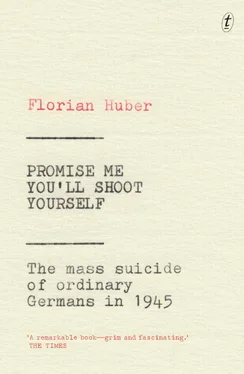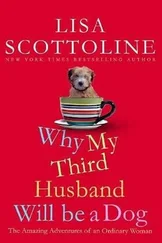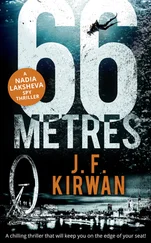• • •
If the previous weeks had seen Demmin become ever more crowded, the old town was now emptying as if on command. Ursula Strohschein looked on with a sense of growing unease: ‘Many, many people were leaving town on foot over Kahlden Bridge, with or without handcarts—or by car, though cars were a rare sight now.’ In the depot, soldiers distributed the last of the tinned food to remaining residents before marching away over Kahlden Bridge. People were hurrying to get home, and the streets were soon deserted—no soldiers, and barely any locals, only a few refugees.
Ursula stood around in the yard with the other people from her building, at a loss and dully apprehensive, knowing that nobody was going to help them. It was not reassuring that the Russian and Polish women, forced labourers billeted across the road, were as frightened of the Soviet soldiers as they were. Out on the street, Ursula could see no one. She looked up at the buildings and wondered whether there was anyone left in them. Around the corner, on Baustrasse, the vicarage was the only house that was still inhabited. Over at one house, an elderly couple called the Kessels had hung a white sheet from the window. Not long after, Ursula said, a couple of her neighbours arrived:
Herr Stoldt, a town councillor of many years’ standing and latterly deputy mayor, came round with his wife to say goodbye. They were heading west on bicycles laden with suitcases. ‘Please keep an eye on our flat,’ he said before they left.
The sun shone in a clear, blue sky. The German troops, including the SS, had left the centre of town. The promised Volkssturm units were nowhere to be seen. The traffic had come to a halt. Only a grinding, clattering noise could be heard in the distance, accompanied by a low rumble. For those who had stayed behind, there was nothing to do but wait. When Adolf Hitler’s twelve-year reign came to an end, the world stopped for a moment in Demmin. Those still in town had time to wonder whether they’d been wise to stay.
The furrier’s and gentlemen’s outfitter’s was a hive of activity that morning. The day before, Marie Dabs had walked to a friend’s estate in the district of Deven, on the west bank of the Peene, with her children and her servant Martha Schröder, then twenty-five years old. When they got there, the place was full of German soldiers, who offered to take the children along with them. Again, Marie Dabs passed up the opportunity. ‘If only I’d said yes! But could I have let them go without knowing what the future held?’ After a peaceful night on the straw of the farmhouse cellar, she and Nanni had fought their way back across the Peene against the flood of soldiers and refugees. On the other side, they were met by oppressive emptiness; the old town was deserted as they walked home over the cobbles. During the night, lying in her friend’s cellar, Marie Dabs had decided to secure the flat against shelling. They took the big paintings down from the walls and put them behind the sofa. They rolled up the rugs. The water had already been turned off. In the distance they heard the thunder of heavy artillery. That scared them.
Nanni took her mother by the hand, saying, ‘Come on, quick, quick!’ All they wanted now, Marie Dabs says, was to get out:
We managed to get across Kahlden Bridge just before it was blown up along with the other bridge over the Peene and the Tollense Bridge. What a terrible fate to befall our beautiful and beloved Demmin.
Three massive detonations broke the silence and put an end to the peace—explosions that could be heard far off in the surrounding villages. At the same time, the grinding and clattering of the Soviet tanks grew closer, as they approached the southern and eastern outskirts of the town. For the people of Demmin, these explosions were a signal to take refuge in their cellars. Some took a suitcase, packed with a change of clothes, identity papers, valuables and a few provisions, as if they could escape their fates by going underground. Everyone expected heavy fighting.
In the cellars, communities born of necessity gathered in the half-darkness—mothers and children, aunts and grandparents, young women and old men, thrown together by the war. Families were joined by friends and relations with no cellars of their own, and by refugees from the east who’d been billeted in Demmin homes by the party. The Strohscheins shared their cellar with some of the forced labourers from across the road. In some places, twenty or more people were squeezed in together, near strangers to one another. The young women wished they could disappear; their only hope was to smear their faces with soot, painting crow’s feet and wrinkles around their eyes with charred matchsticks and wrapping their faces in torn headscarves to make themselves old and ugly—inconspicuous, if not invisible. They had heard of this ploy along with stories of the Soviet advance. Some held children on their laps.
• • •
But not everyone in Demmin took refuge underground. Some decided to anticipate the town’s capture and the end of the world as they knew it. Twenty-seven-year-old Lothar Büchner of the National Labour Service was dead even before Russian soldiers reached his house in Jahnstrasse. He had hanged himself, as had his wife, her sister, and their mother and grandmother. Before that happened, though, one of them had first put a noose around the neck of three-year-old Georg-Peter. Something similar took place in the house of the seventy-one-year-old director of the General Local Health Insurance Fund Bewersdorff. Before he, his wife and their grown-up daughter hanged themselves, his two grandchildren, aged two and nine, had died in the same way. The young wife of a first lieutenant who lived alone with her three-year-old son somehow summoned the will to loop a noose around the boy’s neck and hang him before doing the same to herself. Within these same few hours, an elderly policeman and his wife also hanged themselves. The wife of a chief police constable hanged herself. Her two grown daughters hanged themselves. Only three people—a forty-seven-year-old carpenter, and the wife and daughter of a landowner in Waldberg, west of the Peene—chose another way out: they shot themselves in the head.
These twenty-one suicides—classifying the deaths of the children as ‘murder suicide’, in line with common legal parlance—are recorded in the death register of Demmin Registry Office. Looking at the register and seeing the sudden spate of suicides in Demmin on 30 April 1945, even before the Soviet invasion, you have the sense that this was something unprecedented—but those twenty-one suicides were only a prelude.
On the same day, at around noon, Adolf Hitler announced in his bunker in Berlin that his time was up, and that he would commit suicide that afternoon with his wife, Eva, whom he had married the day before: ‘I myself and my wife choose to die, rather than face the ignominy of deposition or capitulation.’ Hitler had given a great deal of thought to his death and the surest method of killing himself; an SS doctor in the bunker kept a ready supply of brass capsules of prussic acid—the liquid form of hydrogen cyanide. The Führer had convinced himself of their efficacy by having his Alsatian poisoned in the Reich Chancellery garden. Nothing could go wrong at this final stage; he was determined not to fall into Soviet hands alive. He knew the fate of his old political role model Mussolini, executed only two days before and strung up by his legs, along with his mistress, in front of an angry crowd in the middle of Milan. Hitler was determined not to fall into his opponents’ hands, alive or dead. Nothing was to remain of him: ‘It is our will to be cremated immediately in the place where I have done most of my daily work during my twelve years’ service to my people.’
Читать дальше












